Thoth, the Dynastic Egyptian god of writing and magic, was transformed in the mystery schools of Ancient Greece to become an embodied person: Hermes Trismegistus - Hermes the Thrice-great, the wisest interpreter of the ways of the deity, the supreme practitioner of the [1]secret arts, and the spiritual guide of humankind. His most famous writings are to be found in the Emerald Tables, and his best-known dictum is expressed by the phrase: [2]"As above, so below", conveying the idea that the events in the heavens, even the very movements of the stars in their appointed courses, find their counterpart in the activities of the world below. These ideas are further expressed in sacred geometry and architecture, and even in the plans of cities.
But the figure of Hermes, hovering always somewhere between myth and history, seemed to follow the fate of a star that shone brightly, but somehow failed to ignite and blaze fully into a practicing religion, and further doubts about the [3]authenticity of the antiquity of his writings during the Renaissance saw his decline in human influence. I for one am only grateful that Hermeticism never became a recognized religion as such, which inevitably would have seen its purity sullied by an overlayering of doctrine, and its cohesion of vision sundered by the divisive factionalism which seems regrettably to thrive in religious belief.
Does it really matter whether Hermes existed or not as a historical person? If there are legitimate reasons for doubt about this, then that merely puts him on the same historical plane as Jesus, Moses, Lao Tsu and others. What matters is what we have of his writings, and those writings, whoever wrote and compiled them, and as does scripture and the Tao Te Ching, contain an authentic spiritual wisdom. My painting is loosely based upon 17th-century Renaissance portrayals of Hermes. There are no other known historical sources to inform us of his possible appearance.
Notes:
[1] From which we derive our term 'hermetic', meaning something which has been sealed closed.
Notes:
[1] From which we derive our term 'hermetic', meaning something which has been sealed closed.
[2] Expressed symbolically by two overlapping triangles pointing both upwards and downwards, which we now most readily recognize as the Star of David.
[3] The 16th-17th-century scholar Isaac Casaubon claimed to have established that the written works of Hermes dated from no earlier than the 4th-century CE. Although his dating methods were themselves later revealed to be flawed, Casaubon's reputation was so influential that the damage to the widely-read Hermetica had already been done. He also overlooked the fact that, even were this so, the texts, as with scripture and other works of classical literature, built upon an already existing ancient oral tradition.



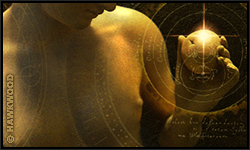




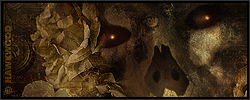


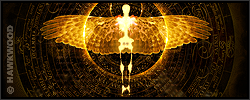



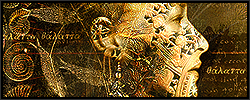


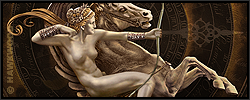











No comments:
Post a Comment
You are welcome to share your thoughts.